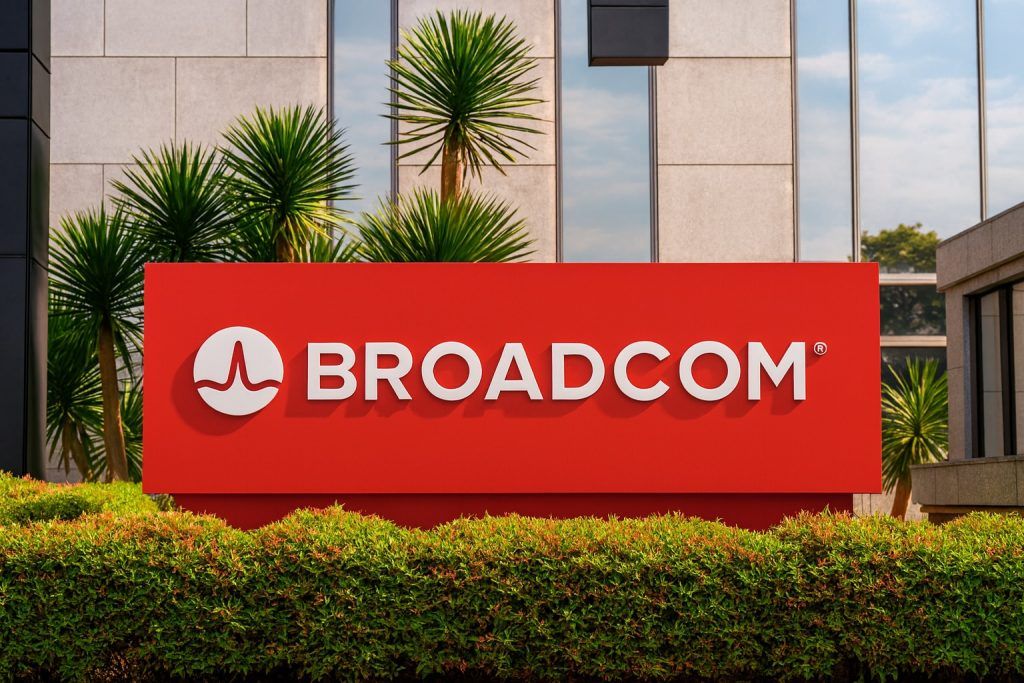Amazon (NASDAQ: AMZN) shares were under pressure again on Wednesday, November 19, 2025, extending a sharp multi‑day slide even as Wall Street’s longer‑term expectations for the stock remain broadly bullish.
As of early afternoon U.S. trading, Amazon stock was hovering around $220 per share, down roughly 1% on the dayand about 11% below its level just five trading sessions ago. That leaves AMZN roughly 15% below its all‑time high near $258.60 set on November 3, but still more than a third above its 52‑week low around $161. [1]
Below is a wrap‑up of the key Amazon stock news and catalysts for November 19, 2025 that traders and longer‑term investors are watching.
Key takeaways for AMZN stock today
- Price action: AMZN trades near $220, down about 1.1% from Tuesday’s close around $222.55 and roughly 10–11% lower over the past week. [2]
- Regulatory shock from Europe: An EU court rejected Amazon’s challenge to its “Very Large Online Platform” designation under the Digital Services Act, while EU watchdogs also moved to classify AWS as “critical” infrastructure and opened gatekeeper probes into its cloud business. [3]
- AI spending and bond‑sale worries: A $15 billion bond issue to fund AI data‑center spending and an analyst downgrade from Rothschild & Co Redburn have become focal points for investors worried about “AI bubble” economics. [4]
- Wall Street still mostly bullish: Despite the pullback, Loop Capital just raised its AMZN price target to $360, 24/7 Wall St. pegs fair value at $250.85 for year‑end 2025, and the Street‑wide consensus target sits near the high‑$290s, implying 30%+ upside from current levels. [5]
- Fundamentals intact: In Q3 2025, AWS revenue jumped 20% to $33 billion and advertising grew roughly 24% to $17.7 billion, leaving Amazon with double‑digit revenue growth and margins above 11% — even as free cash flow comes under fresh scrutiny. [6]
Amazon stock today: price, performance and volatility
According to real‑time market data, Amazon stock recently traded around $220.04, versus Tuesday’s close of $222.55. That’s a $2.51 drop, or about 1.1% lower on the day, on volume north of 30 million shares — in line with the heightened activity seen during the recent sell‑off. [7]
From a wider lens:
- 5‑day move: Trefis calculates that AMZN has fallen about 10.7% over the past five trading days, underscoring how abrupt the pullback has been after an early‑November peak. [8]
- Distance from records: The stock is now about 15% below its all‑time high near $258.60, clocked on November 3, 2025, and roughly 36% above its 52‑week low around $161.38. [9]
- Year‑to‑date: Even after the drop, AMZN remains up by a low‑double‑digit percentage in 2025, placing it in the middle of the “Magnificent Seven” pack rather than at the top. [10]
Options traders are also waking up to the volatility. A Barchart column notes that AMZN’s implied volatility has climbed to roughly 36–37%, up from a 12‑month low near 23%, making the stock a popular candidate for range‑bound strategies like iron condors. [11]
From record highs to a five‑day slide: what changed?
Q3 earnings lit the fuse — in a good way
The current sell‑off comes only weeks after Amazon’s Q3 2025 earnings sparked a huge rally:
- AWS revenue climbed 20% year over year to about $33 billion, its fastest growth in nearly three years and above Wall Street expectations. [12]
- AWS now generates around 60% of Amazon’s total operating income, despite contributing a much smaller share of revenue — underlining how central the cloud unit is to the AMZN investment case. [13]
- Advertising remained another powerhouse, with Q3 ad sales rising roughly 24% year over year to $17.7 billion. [14]
- Company‑wide, Amazon posted Q3 revenue of about $180.2 billion (up 13.4% YoY) and a net profit margin around 11–12%, alongside EPS of $1.95, comfortably ahead of consensus. [15]
Those results sent AMZN soaring roughly 14% in after‑hours trading at the end of October, catapulting the stock to that November 3 record high. [16]
AI spending and bond‑market jitters
The tone shifted this week after Amazon tapped the bond market for $15 billion, its first such deal since 2022, to fund AI‑driven infrastructure and other investments. According to Investor’s Business Daily, the bond sale coincided with AMZN sliding more than 3% on Tuesday and dipping below its 50‑day moving average. [17]
In the same coverage, analysts at Rothschild & Co Redburn downgraded Amazon (and Microsoft) to neutral, arguing that AI infrastructure could be “value‑destructive” because it may require about six times more capital to generate the same value as traditional cloud services. [18]
That critique plugs into a broader debate: a growing chorus of strategists, including several at Morningstar and MarketWatch, have warned that parts of the AI trade may be entering bubble territory, particularly where valuations rest on ambitious long‑term scenarios. [19]
Trefis and Forbes highlight downside risk
Trefis published multiple pieces on November 19 dissecting Amazon’s recent slide:
- One article notes that Amazon.com stock is down about 10.7% in five trading days, with the pullback driven by concerns over slowing AWS growth, tougher cloud competition and renewed “AI bubble” fears. [20]
- A companion deep‑dive asks, “What’s the downside risk for Amazon stock?” and stress‑tests a scenario where AMZN falls another 30% to roughly $156 per share — a level it has visited in past corrections. The piece emphasizes that historically Amazon tends to sell off harder than the S&P 500 during panics, but also recover faster once conditions stabilize. [21]
A related column in Forbes echoes this framing, talking about “30% downside risk amid the AI bubble” while leaning on the same historical drawdown data. [22]
Taken together, these narratives help explain why Amazon’s post‑earnings euphoria has quickly given way to risk‑management mode, even though the business itself is still growing at a healthy clip.
Wall Street is still largely bullish on AMZN
Despite the downgrades and AI angst, the analyst community as a whole remains positive on Amazon stock.
Loop Capital sets a new street‑high target
On Tuesday, Loop Capital raised its price target on Amazon from $300 to $360 while reiterating a buy rating — one of the most aggressive AMZN calls on the Street. [23]
At today’s ~$220 share price, a $360 target implies roughly 60% upside over the next 12 months.
Other brokerages have also nudged their targets higher into the $275–$335 range, with firms like HSBC, Deutsche Bank, Goldman Sachs, Citigroup and Evercore all maintaining buy or outperform ratings after Q3. [24]
MarketBeat: one downgrade, but consensus still strong
MarketBeat reports that Rothschild Redburn cut Amazon from “strong buy” to “hold”, citing AI‑spending concerns. Yet its data also show: [25]
- Around 60 analysts currently cover the stock.
- The vast majority rate AMZN a buy or strong buy, with only a handful at hold and a single sell rating.
- The consensus price target sits around $294–$295, roughly 34% above today’s trading level.
24/7 Wall St and TradingNews: 2025–2030 roadmaps
A fresh 24/7 Wall St. forecast published November 19 pegs: [26]
- Wall Street’s median 1‑year target at $294.97, implying about 32.5% upside from current prices.
- Its own year‑end 2025 fair‑value estimate at $250.85, or around 12–13% upside, based on continued strength in AWS and advertising.
- A longer‑term 2030 price scenario near $524.67, assuming revenue grows to roughly $1.15 trillion and net income tops $130 billion by the end of the decade.
Separately, TradingNews argues that Amazon shares around $221 could reasonably re‑rate toward $310, supported by: [27]
- AWS revenue up 20% year over year,
- Advertising up roughly 22%, and
- A cloud backlog near $200 billion, bolstered by additional AI‑heavy contracts signed in October.
That article characterizes Amazon as “one of the most compelling large‑cap growth stories globally,” forecasting around 40% upside over the next 12 months if AWS, AI hardware and advertising continue to scale.
Momentum camp: Zacks and options traders
On the momentum side, Zacks highlighted Amazon today as a “strong momentum stock”, pointing to its history of earnings beats and favorable estimate revisions even as the share price pulls back. [28]
Barchart’s options desk, meanwhile, notes that high implied volatility and a sideways trading range between the 50‑ and 200‑day moving averages have made AMZN an attractive candidate for premium‑selling strategies — a sign that at least some traders expect the stock to chop around these levels rather than break sharply lower in the very near term. [29]
Europe turns up the heat: DSA, DORA and DMA probes
One of the biggest new headlines for Amazon on November 19 has nothing to do with earnings — and everything to do with regulation.
EU court upholds Amazon’s “Very Large Online Platform” status
In a decision published Wednesday, the European Union’s General Court rejected Amazon’s attempt to overturn its classification as a “Very Large Online Platform” (VLOP) under the Digital Services Act (DSA). [30]
That designation:
- Applies to platforms with over 45 million EU users,
- Imposes tougher obligations to police illegal content, combat counterfeit goods and increase algorithmic transparency, and
- Opens the door to hefty fines if Amazon fails to comply.
Amazon had argued that its marketplace isn’t like a social network and therefore doesn’t pose the same systemic risks, but the court disagreed, pointing out that marketplaces can still spread illegal or harmful products and infringe consumer rights at scale. The company is expected to continue fighting the label, yet for now the ruling cements higher compliance costs and oversight in one of Amazon’s key regions.
AWS tagged “critical” under DORA
The regulatory squeeze doesn’t end there. On November 18, EU authorities also designated Amazon Web Services as a “critical” third‑party technology provider for the financial sector under the Digital Operational Resilience Act (DORA). [31]
That move allows three major EU regulators to directly supervise AWS’s risk management and resilience, subjecting Amazon’s cloud operations to bank‑style stress tests around outages, cyber‑risks and geopolitical shocks. It doesn’t immediately alter AWS’s economics, but it adds oversight and potential cost just as Amazon is ramping AI‑related investment.
DMA “gatekeeper” investigations into AWS and Azure
At the same time, the European Commission has launched three investigations under the Digital Markets Act (DMA), including two probes that will determine whether AWS and Microsoft Azure should be formally classified as “gatekeepers” in cloud computing. [32]
If AWS is ultimately labeled a gatekeeper, Amazon could face:
- Strict interoperability requirements with rival clouds,
- Limits on how it bundles and self‑preferences its own services, and
- Fines of up to 10% of global annual turnover for serious violations. [33]
The Commission aims to conclude these investigations within about 12 months, so they represent a medium‑term overhang rather than an immediate shock — but today’s headlines are reminding investors that regulatory risk is very real for AMZN, especially in Europe.
Amazon’s portfolio moves: selling IonQ and AMD stakes
Another story hitting the tape today involves Amazon’s own investments in other tech names.
A new Motley Fool piece, syndicated across Yahoo Finance and other outlets, highlights that Amazon’s latest 13F filing shows it completely exited its positions in quantum‑computing specialist IonQ (NYSE: IONQ) and AI chip leader Advanced Micro Devices (NASDAQ: AMD) during the September quarter. [34]
The filing doesn’t explain why Amazon sold:
- It could be plain‑vanilla portfolio rebalancing,
- A decision to focus on its in‑house chips (Trainium and Inferentia) rather than external GPU or quantum bets, or
- A way to de‑risk from some of the frothier corners of the AI and quantum trade.
Whatever the motive, seeing Amazon trim exposure to high‑beta AI names at the same time critics warn about an AI bubble is adding yet another layer to today’s debate about how aggressively the company — and investors — should be leaning into the theme.
Fundamentals in focus: AWS, ads and free cash flow
Even amid all the headlines, most of the serious analysis on November 19 keeps circling back to three numbers:
- AWS growth and backlog
- Advertising momentum
- Amazon Ads pulled in about $17.7 billion in Q3, growing roughly mid‑20s percent year over year and offering a high‑margin complement to AWS in the company’s profit mix. [37]
- Free cash flow and capex
- Q3 results and subsequent commentary show net income and operating cash flow growing strongly, but free cash flow remains volatile as Amazon pours money into AI chips, data centers and logistics. [38]
- A Motley Fool piece today warns that Wall Street consensus expects free cash flow to drop by around 45% year over year in 2025, urging investors to watch closely whether cash generation can re‑accelerate as AI investments mature. [39]
This tug‑of‑war — booming high‑margin businesses vs. heavy AI capex and regulatory drag — is at the heart of today’s volatility in AMZN.
What to watch next for Amazon stock
For traders and long‑term holders, the near‑term narrative around Amazon stock now hinges on a few concrete checkpoints:
- AWS re:Invent 2025 (Dec 1–5, Las Vegas) – Amazon’s flagship cloud conference is expected to showcase new AI infrastructure, custom silicon (Trainium/Inferentia) and enterprise AI services. Strong customer announcements or clearer capex‑to‑cash‑flow math could calm some of the “AI bubble” worry. [40]
- Further regulatory developments in Europe – Any signals from Brussels about AWS’s gatekeeper status or stricter DSA enforcement could move the stock, especially if they hint at material changes to how Amazon bundles or monetizes its services. [41]
- Bond‑market reception & credit spreads – The $15 billion bond sale puts Amazon squarely in the middle of the “AI debt” debate. How those bonds trade relative to peers will tell investors whether credit markets buy the long‑term AI story — or are starting to balk. [42]
Bottom line: Amazon stock today
On November 19, 2025, Amazon stock is caught between two powerful forces:
- On one side, AWS, advertising and AI‑driven services are delivering robust growth, fat margins and enormous backlogs, leading most Wall Street analysts to maintain buy ratings and set targets 30–60% above today’s price. [43]
- On the other, EU regulatory actions, bond‑funded AI capex and warnings about a potential AI bubble are driving an 11% pullback in just a handful of sessions, with some research shops openly stress‑testing scenarios where the stock could fall another 20–30% in a severe downturn. [44]
For now, AMZN sits well below its early‑November highs but far above its 2023–2024 lows, trading at a premium valuation that assumes Amazon will successfully convert massive AI and cloud spending into durable free‑cash‑flow growth.
Nothing in this article is personal investment advice, but if you follow Amazon stock, today’s message from the market is clear: the growth story is intact — the debate is about how much risk, regulation and AI spending you’re willing to stomach along the way.
References
1. stockanalysis.com, 2. www.trefis.com, 3. www.reuters.com, 4. www.investors.com, 5. www.marketbeat.com, 6. www.reuters.com, 7. stockanalysis.com, 8. www.trefis.com, 9. www.tradingview.com, 10. www.investors.com, 11. www.barchart.com, 12. www.reuters.com, 13. www.reuters.com, 14. www.reuters.com, 15. www.google.com, 16. www.reuters.com, 17. www.investors.com, 18. www.investors.com, 19. www.morningstar.com, 20. www.trefis.com, 21. www.trefis.com, 22. www.forbes.com, 23. www.marketbeat.com, 24. www.marketbeat.com, 25. www.marketbeat.com, 26. 247wallst.com, 27. www.tradingnews.com, 28. www.zacks.com, 29. www.barchart.com, 30. www.reuters.com, 31. www.reuters.com, 32. www.reuters.com, 33. www.reuters.com, 34. www.sharewise.com, 35. www.reuters.com, 36. markets.financialcontent.com, 37. www.reuters.com, 38. www.google.com, 39. www.fool.com, 40. reinvent.awsevents.com, 41. www.reuters.com, 42. www.investors.com, 43. www.reuters.com, 44. www.trefis.com







